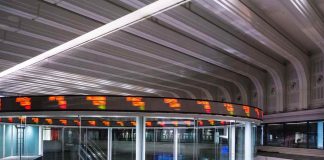Serbian President Aleksandar Vučić made his first official visit to Ukraine on Wednesday, attending the Fourth Ukraine–Southeast Europe Summit in Odesa amid Russia’s ongoing military aggression.
This marked the first visit to Ukraine by a Serbian head of state since Boris Tadić travelled to Kyiv in 2011, and the first by Vučić in his twelve years as president.
The summit, hosted by Ukrainian President Volodymyr Zelenskyy, brought together senior representatives from 12 countries in Southeastern Europe. It was held against the backdrop of renewed Russian missile and drone attacks on the strategically important Black Sea port city.
Vučić’s presence at the summit is widely seen as symbolically significant, given Serbia’s traditionally close ties with Russia and its status as a military-neutral country. He has previously met Zelenskyy on several occasions but had not until now made an official visit to Ukraine.
During the meeting, Vučić expressed readiness for Serbia to assist in the post-war reconstruction of Ukraine, offering support in the restoration of infrastructure in regions damaged by Russian strikes. “We want to be part of the process of rebuilding,” he told Serbian media during his brief stay.
However, Vučić declined to sign the summit’s joint declaration. The final document backed Ukraine’s pursuit of a diplomatic solution leading to a just and lasting peace, called for increased international support for Kyiv, and urged countries to refrain from providing any form of assistance to the Russian war effort.
Explaining his abstention, Vučić said his decision was aimed at preserving Serbia’s relationships with both Ukraine and Russia. “By protecting our [Serbia’s] interests I am partially protecting both Russian and Ukrainian interests alike … as we are protecting the interests of international law,” he said.
Serbia continues to pursue accession to the European Union and has aligned itself with the EU on many foreign policy positions. However, it has not joined Western sanctions against Russia, which remains Serbia’s largest energy provider. The country’s only oil refinery is majority-owned by Russia’s Gazprom and Gazprom Neft, further complicating Belgrade’s position.
While avoiding direct alignment in the Russia–Ukraine war, Serbia has consistently affirmed its support for Ukraine’s territorial integrity, including recognition of Crimea and the eastern territories seized by Russia since 2014. Conversely, Ukraine has maintained its refusal to recognise the independence of Kosovo, Serbia’s former southern province, declared in 2008.
Recent tensions between Serbia and Russia have been aggravated by accusations from Moscow that Serbian arms have ended up in Ukrainian hands. In May, Russia’s foreign intelligence agency, the SVR, accused Serbia of delivering arms to Ukraine through third-party channels, describing it as “a stab in the back.” The allegations were supported by a leaked US Pentagon document, reportedly dating from 2023, which claimed that Serbia had agreed to supply weapons to Kyiv despite its declared neutrality.
Serbian officials have repeatedly denied the charges, insisting that while Serbian arms manufacturers sell to international markets, there have been no direct sales to Ukraine. The government maintains that it adheres to strict export controls and has not authorised shipments destined for the conflict zone.
The backdrop to Vučić’s visit was Odesa’s recovery from a large-scale Russian missile and drone assault earlier this week, which damaged port infrastructure and residential areas. Hosting the summit in Odesa was seen by Ukrainian officials as a show of resilience and regional solidarity.
Zelenskyy welcomed all visiting leaders and underscored the importance of unified support for Ukraine’s sovereignty and European future. He reiterated calls for enhanced cooperation in regional security, economic recovery, and Ukraine’s integration into Euro-Atlantic structures.
The summit comes as Ukraine continues to seek broader international support amid a protracted and intensifying war. The presence of Vučić — a prominent leader from a country historically aligned with Russia — was noted as a potential signal of changing dynamics in Southeast Europe’s political landscape, though the refusal to endorse the summit declaration suggests limits to any realignment.
The last high-level exchange between Serbia and Ukraine took place in 2018 when then-President Petro Poroshenko visited Belgrade. Vučić’s visit to Odesa is likely to be scrutinised both in Brussels, where Serbia’s EU path is under ongoing review, and in Moscow, where frustration with Belgrade’s occasional divergence from Kremlin interests has grown more pronounced.
Read also:
Appeasement Redux? Trump’s Russia Overtures Mirror the Munich Betrayal



